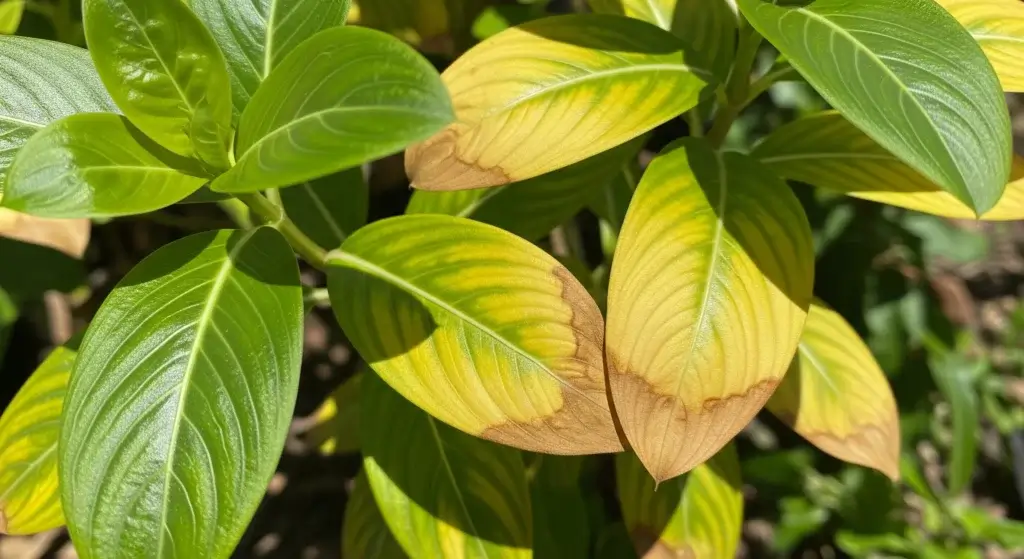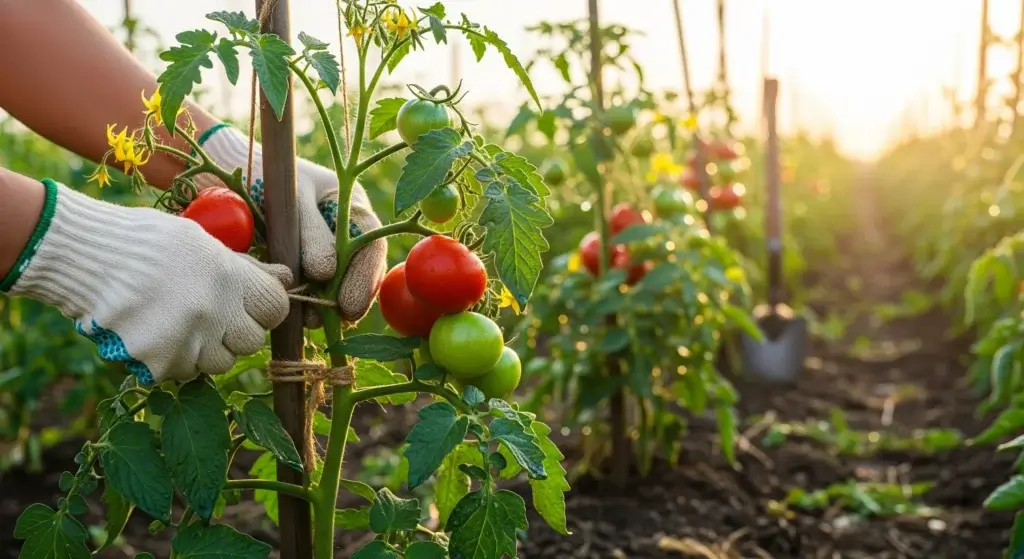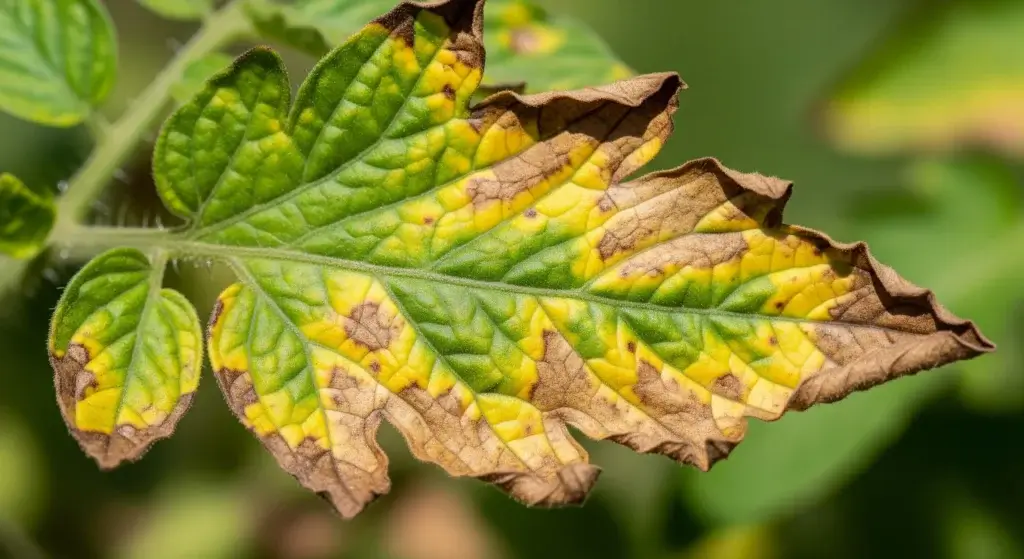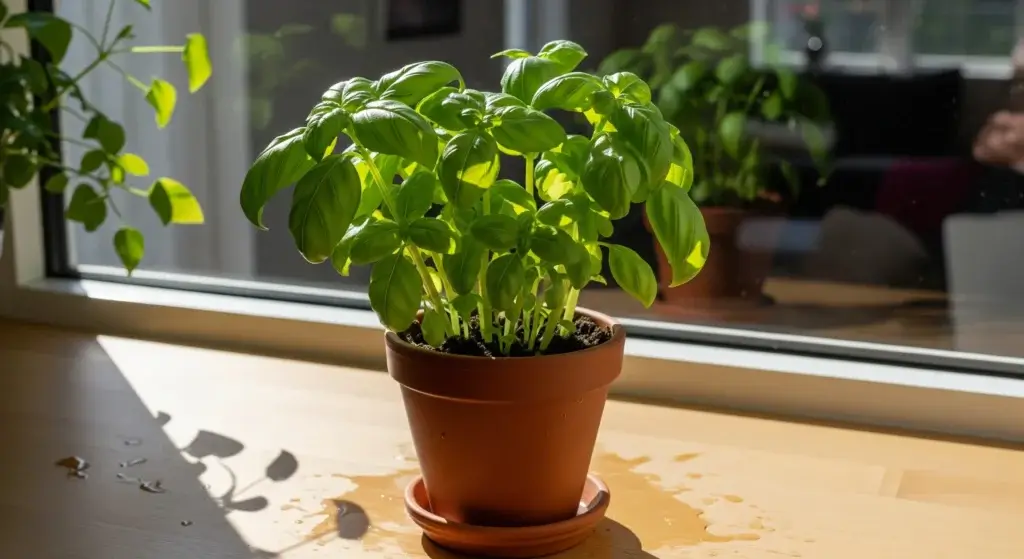
If your once-lively vinca plants are suddenly rocking yellow leaves, don’t freak out—you’re definitely not the only one.
Both annual vinca (Catharanthus roseus) and perennial types (Vinca minor and Vinca major) pull this stunt sometimes, leaving gardeners scratching their heads.
The good news? There’s always a reason behind it.
In this guide, we’ll break down why vinca leaves turn yellow, how to spot what’s really going on, and how to bring your plants back from the brink—no fancy gardening degree required.
The Most Common Causes of Yellow Vinca Leaves
1. Overwatering and Poor Drainage
The number-one villain for vinca is too much water.
These plants are low-key drought-tolerant — they’d rather be a little thirsty than sit in a soggy swamp.
When roots drown in waterlogged soil they suffocate, rot, and your once-happy leaves start turning yellow.
Signs your vinca is overwatered:
- Leaves turn yellow, starting with the lower ones
- Soil stays constantly wet or soggy
- Plant wilts even though the soil is wet
- Stems near the soil line get mushy or blackened
- Funky fungal growth on the soil surface
Solution:
- Let the soil dry out between waterings.
- Do the finger test — shove a finger about two inches down; if it’s wet, don’t water.
- Fix drainage: mix in compost or perlite for heavy clay, and make sure pots have holes. If roots are toast, repot into fresh, fast-draining soil.
2. Nutrient Deficiencies
Yellow leaves can also be your plant hollering for food.
Different nutrients cause different yellow patterns, so pay attention
Common deficiencies:
- Nitrogen: older, lower leaves go yellow while new growth stays green. (Plants move N from old to new when it’s scarce.)
- Iron (chlorosis): yellow between veins while the veins stay green — classic iron problem, often in alkaline soils.
- Magnesium: looks kind of like iron issues but usually shows up on older leaves first, yellowing from the margins.
Solution:
Feed your vinca with a balanced, water-soluble fertilizer for flowering plants every 2–3 weeks during the growing season.
If it’s an iron problem, try chelated iron or iron sulfate (these help make iron usable in the soil).
Want to be precise? Get a soil test — it’s like a blood test for your garden.
3. Watering Problems: Underwatering
Yes, under-watering can make leaves yellow too.
When vinca doesn’t get enough water, it can’t move nutrients properly and starts sacrificing leaves to survive.
Signs of underwatering:
- Leaves look yellow and crispy/dry
- Soil pulls away from pot edges
- Wilting that perks up after watering
- Stunted growth
Solution:
Set up a consistent watering routine that fits your climate and soil.
Water deeply when the top inch of soil is dry so moisture reaches the roots.
Add mulch around plants to hold moisture and keep temps steady.
4. Fungal Diseases
Wet conditions + bad drainage = fungal nightmares.
Diseases like Phytophthora (root and stem rot), aerial Phytophthora blight (spots that lead to yellowing and drop), and Pythium (another root attacker) will wreck vinca fast.
These are especially common in poorly drained beds — think soggy soil horror show.
Solution:
Prevention is your best move.
Space plants for airflow, avoid overhead watering, yank out infected bits ASAP, and improve drainage.
Some fungicides (mefenoxam or fosetyl-Al) can help prevent disease, but once things get bad they’re tough to beat.
5. Environmental Stress and Temperature Fluctuations
Vinca is chill with heat most of the time, but extreme temps, transplant shock, or the wrong light will stress it and show up as yellow leaves.
Cold under ~50°F, sudden transplant moves, or too little/too much sun can all cause problems.
Solution:
Give plants shade during the brutal afternoon heat if you’re in a hot zone, protect them from cold snaps, and let transplants acclimate gradually — move indoor-grown plants outside for 7–10 days before planting them full-time.
6. Pest Infestations
Bugs can cause yellowing too, though it’s usually less common than watering or nutrient issues. Watch for:
- Spider mites: tiny sap-suckers that cause stippling and yellowing — you might see fine webbing.
- Aphids: cluster on new growth and underside of leaves, distort foliage and cause yellowing.
- Whiteflies: tiny flying pests that weaken plants and make leaves yellow.
Solution:
Inspect plants often. Blast pests off with a strong spray of water, use insecticidal soap or neem oil for bigger infestations, or invite beneficials like ladybugs to the party for biological control.
Step-by-Step Diagnosis Guide
To figure out why your vinca’s turning yellow, go through this quick detective routine — think CSI: Plant Edition.
- Check soil moisture: Stick your finger about two inches into the soil. Is it bone-dry (thirsty), slightly moist (happy), or waterlogged (drowning)?
- Examine the yellowing pattern: Which leaves are yellow — the old ones or the new ones? Is the yellow all-over or just between the veins?
- Inspect the stems and roots: Gently peek at the base. Are stems mushy, blackened, or weird-looking? Rotten roots = major red flag.
- Look for pests: Flip leaves over and check new growth. Any tiny bugs, sticky goo, or spider-webby stuff? Those little devils can wreck your plant’s vibe fast.
- Review recent care: Think back — did you change how often you water, feed it, or where you put it? Sudden changes = stress. Plants remember your mistakes.
- Consider environmental factors: Any heat waves, cold snaps, recent transplanting, or shifts in light? Those shocks can make vinca go yellow just to cope.
Do these checks and you’ll basically have the answer. Then fix the problem and watch your vinca glow back up.
Prevention: Keeping Your Vinca Healthy
The best cure for yellow leaves? Don’t let them happen in the first place.
Prevention is like brushing your teeth — easier than fixing the damage later. Here’s how to keep your vinca living its best, green life:
Plant in Well-Draining Soil
Vinca hates soggy feet. Mix in compost or perlite to keep the soil light and airy — think “fluffy brownie batter,” not “cement after rain.”
Water Wisely
Don’t drown it in love. Let the soil dry out a bit before watering again, then give it a deep soak.
Frequent sips just annoy it; vinca prefers the occasional big gulp.
Provide Proper Spacing
Give your plants room to breathe — 8–12 inches apart.
Crowded vincas trap moisture, and that’s basically an open invite for fungus. (No one likes a sweaty roommate.)
Fertilize Regularly
Feed your vinca every 2–3 weeks during the growing season with a balanced fertilizer.
It’s like giving it a protein shake — keeps it strong, blooming, and drama-free.
Monitor for Problems
Take a weekly plant patrol. Look under leaves, check the soil, and spot issues early before they turn into full-blown crises.
Choose Resistant Varieties
Some vincas are built tougher. Go for disease-resistant types — it’s like getting the “anti-virus” version of your plant.
Practice Good Garden Hygiene
Clean up dead leaves and debris like you’re tidying your room before guests come over.
Messy gardens attract pests and diseases faster than a dropped ice cream cone attracts ants.
When to Start Over
Alright, real talk — sometimes your vinca’s not coming back.
You can water it, sing to it, even beg it like it’s your ex, but if the roots are mushy, the stems are black, and most leaves are gone… it’s game over.
If you spot serious root rot and everything’s basically melting, pull it out, toss it, and give the soil a glow-up.
Mix in fresh compost, fix that drainage, and start over with new, healthy plants.
And hey — don’t beat yourself up. Every dead plant is a lesson in disguise.
Figure out what went wrong (too much water? bad soil? neglect?) and adjust your plant-care game.
Next time, your vinca will thrive — and you’ll feel like a total pro.
Conclusion
Yellow leaves are not your vinca’s defeat — they’re its cry for help.
It’s basically yelling, “Hey, something’s wrong!” Too much water, not enough nutrients, or a pesky unwelcome guest — you can fix it once you notice the issue.
The real secret? Stay consistent. Good soil, smart watering, and regular check-ins beat rescue missions every time.
Do that, and your vinca will bounce back strong — full of green leaves and bright blooms that scream, “I’m thriving, thanks!”



